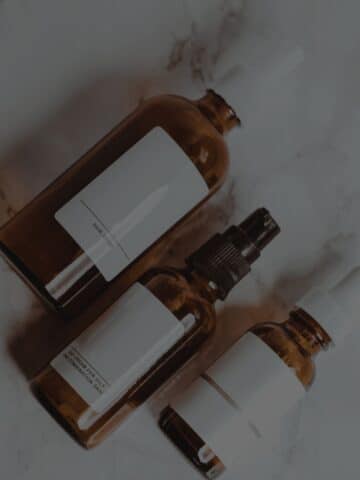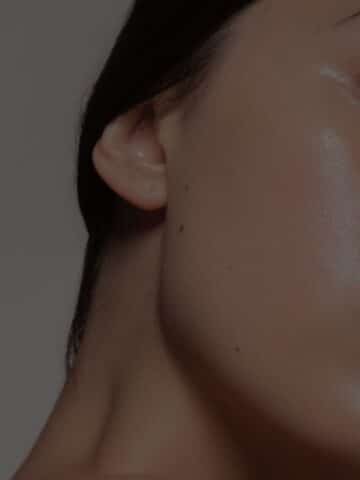
This site may earn commission from affiliate links. See policies and disclaimers.
Jump to:
When it comes to maintaining healthy and youthful skin, one of the most crucial steps is protecting it from the damaging effects of the sun. Sun exposure contributes to premature aging and increases the risk of skin cancer. About 90% of aging is due to external factors such as sun exposure.
In this article, we'll explore the importance of sun protection and shed light on key terms like SPF, UVA, and UVB, helping you understand how to safeguard your skin effectively.
Jump to:
Understanding the Basics:
Before delving into the specifics of sun protection, let's establish a foundation of knowledge. The sun emits two harmful ultraviolet (UV) rays: UVA and UVB. UVA rays penetrate deep into the skin, leading to long-term damage like wrinkles and age spots, while UVB rays primarily affect the outermost layers, causing sunburns. Both UVA and UVB rays contribute to skin cancer development.
Excessive sun exposure is a leading cause of premature aging, and understanding how the sun affects our skin is crucial in maintaining a youthful appearance. The sun emits harmful ultraviolet (UV) rays, specifically UVA and UVB rays, that penetrate the skin and initiate a cascade of damaging effects.
UVA rays, which can penetrate the skin, are responsible for the breakdown of collagen and elastin fibers, essential components that provide skin with elasticity and firmness. Over time, this collagen and elastin degradation leads to fine lines, wrinkles, and sagging skin formation. Additionally, UVA rays contribute to the development of age spots and uneven skin tone as they stimulate melanin production.
UVB rays, on the other hand, primarily affect the outermost layers of the skin, causing sunburns and triggering a response that leads to the thickening of the skin's outer layer, resulting in a rough and leathery texture.
Moreover, UVA and UVB rays can accumulate free radicals in the skin, causing oxidative stress and cellular damage, further accelerating aging. Therefore, protecting our skin from the sun's harmful rays through consistent sun protection measures is crucial in preventing premature aging and maintaining a youthful complexion.
The Role of SPF:
Sun Protection Factor (SPF) is a common term associated with sunscreens. It indicates the level of protection a product offers against UVB rays. For example, an SPF 30 sunscreen blocks around 97% of UVB rays, while an SPF 50 sunscreen blocks approximately 98%. Higher SPF values provide slightly more protection, but it's crucial to note that any sunscreen is better than zero.
Broad-Spectrum Protection:
Opting for a broad-spectrum formula is essential when choosing sunscreen. Broad-spectrum sunscreens protect against UVA and UVB rays, shielding your skin from a broader range of harmful effects. Look for products explicitly stating "broad-spectrum" on the label to ensure comprehensive protection.
Application and Reapplication:
Proper application of sunscreen is key to its effectiveness. Apply a generous amount to all exposed areas of the skin approximately 15-30 minutes before sun exposure, 365 days a year. Remember commonly overlooked areas such as the ears, back of the neck, and tops of the feet. Reapply sunscreen every two hours or more frequently if you're swimming, sweating excessively, or towel-drying.
Reapplication is difficult over makeup, but a sunscreen powder can provide small amounts of protection. Additionally, facial setting sprays with SPF are also helpful.
Korean Sunscreens:
In recent years, Korean sunscreens have gained significant popularity for their advanced formulations and innovative approaches to sun protection. These sunscreens go beyond traditional formulations, offering unique features and benefits that cater to the needs of skincare enthusiasts worldwide.
Lightweight and Cosmetically Elegant:
One standout characteristic of Korean sunscreens is their light and cosmetically elegant formulations. Unlike traditional sunscreens that often feel heavy or leave a white cast, Korean sunscreens are perfect for daily use because they are lightweight, easily absorbed, and leave a smooth, non-greasy finish. They are also suitable for layering with other skincare and makeup products.
High SPF and PA Ratings:
Korean sunscreens typically boast high Sun Protection Factor (SPF) and PA (Protection Grade of UVA) ratings. SPF indicates protection against UVB rays, while the PA rating reflects protection against UVA rays. Korean sunscreens often offer SPF 50+ and PA+++ or higher, ensuring robust protection against harmful UV rays.
UVA and UVB Filters:
Korean sunscreens incorporate a variety of UVA and UVB filters to provide broad-spectrum protection. Some common UVA filters found in Korean sunscreens include butyl methoxydibenzoylmethane (avobenzone), Ethylhexyl methoxycinnamate (octinoxate), and bis-ethylhexyloxyphenol methoxyphenyl triazine (Tinosorb S). These filters work together to absorb or scatter UVA and UVB rays, minimizing their penetration into the skin.
Innovative Formulations and Ingredients:
Korean sunscreens often feature innovative formulations and incorporate skin-nourishing ingredients. Many sunscreens contain hydrating and soothing components like hyaluronic acid, aloe vera, green tea extract, and centella asiatica, which help to keep the skin moisturized and calm. Some sunscreens also offer benefits such as brightening effects, anti-aging properties, or sebum control, catering to various skin concerns.
Multi-functional Benefits:
Another notable aspect of Korean sunscreens is their multi-functional nature. Some sunscreens act as primers, providing a smooth base for makeup application. Others offer mattifying properties to control excess shine, making them suitable for individuals with oily or combination skin. Some Korean sunscreens even incorporate skincare benefits like antioxidants, vitamin C, or niacinamide, which contribute to overall skin health while offering sun protection.
Try these Korean Sunscreens
The 2-Step Approach: Double Cleansing: Korean skincare routines prioritize sun protection and thorough cleansing. They recommend double cleansing, which involves using an oil-based cleanser followed by a water-based cleanser. This method removes sunscreen, makeup, and impurities, leaving a clean surface for further skincare steps.
My current favorite cleansing balm is only $9 on Amazon and it smells like fruity pebbles.
My sunscreen routine
My sunscreen routine involves a few different sunscreens. It's important to layer sunscreen for secured protection. Mixing sunscreen with products that don't contain SPF dilutes its' efficacy. That's why I apply a base layer of sunscreen before I go in with tinted sunscreens or makeup.
- Round Lab Birch Sunscreen - I use this as a first step to sun protection. I apply a generous amount to my face, neck, chest, and ears.
- Super Goop's Play sunscreen - I used to apply this to my face, but I prefer the Round Lab Sunscreen now. I put this on my neck, chest, arms, and legs.
- Super Goop's Unseen sunscreen + It Cosmetics CC cream - I mix these sunscreens to improve their texture and give my face slight coverage. I use this like a foundation, focusing on the center of my face.
- ELF CC Cream - This part is semi-unnecessary. I don't love how this sits on my face when applying it everywhere, so I use it as a highlighter in the inner corners of my eyes and the center of my face. Also, it only contains 30 SPF, and I prefer to use products with at least 50 SPF. Although, if you have oily skin, you may love this product.
- Drunk Elephant Tinted Sunscreen - I use this on the perimeter of my face. It has a pretty glow with little coverage.
- SPF Setting Spray - Sometimes, I skip this step, but I like to give my skin added coverage on extra sunny days.
Other Sun Protection Measures: While sunscreen is vital, adopting additional sun protection measures is essential. Seek shade during peak sun hours (typically between 10 am and 4 pm) when the sun's rays are strongest.
Wear protective clothing, including wide-brimmed hats, long sleeves, and sunglasses with UV protection. These measures complement sunscreen usage and provide extra defense against harmful UV rays.
Summary
Prioritizing sun protection is a fundamental aspect of maintaining healthy and youthful skin. By understanding terms like SPF, UVA, and UVB and adopting proper sun protection measures, you can safeguard your skin from the harmful effects of the sun. Remember, consistent and thorough sun protection practices are a long-term investment in your skin's health and overall well-being.
The content provided on this website is for informational and educational purposes only. It is not intended to be a substitute for professional advice, diagnosis, or treatment. Always seek the advice of a qualified healthcare professional with any questions you may have regarding a medical condition. See policies and disclosures.






Leave a Reply